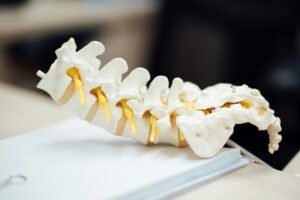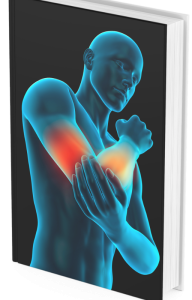Good evening and thank you for joining me today. In this blog post, I will be discussing sciatica and providing information on its causes, symptoms, and treatment options. Sciatica is a condition characterized by irritation of the sciatic nerve, which is the largest nerve in the human body. It is made up of the nerve roots of L4, L5, S1, S2, and S3.
Sciatica is not a specific diagnosis but rather a symptom of compression or inflammation of the sciatic nerve. It is important to differentiate between true sciatica and other conditions that may cause similar symptoms. True sciatica is characterized by compression of the sciatic nerve and pain that radiates down the leg. Referred pain or hip pain can also cause symptoms similar to sciatica, so it is crucial to accurately diagnose the condition before proceeding with treatment.
The most common cause of sciatica is compression of the nerve due to a herniated disc. The discs in the spine act as cushions and can become prolapsed or herniated, irritating or compressing the sciatic nerve. Other causes of sciatica include inflammation of the facet joints, tumors, and spinal stenosis, which is the narrowing of the spinal canal due to osteoarthritis.
To diagnose sciatica, there are two simple tests that can be done. The first is the straight leg raise test, where a person lifts their leg and experiences excruciating pain radiating down the leg. The second is the slump test, where a person sits and slumps forward, causing pain in the leg. These tests help determine if the pain is truly sciatica.
Conservative treatment options for sciatica include anti-inflammatory medications, pain relievers, and physical therapy. Osteopathy and medical acupuncture are also effective treatment modalities. Osteopathy involves manipulative techniques to improve mobility and blood flow in the affected area. Medical acupuncture stimulates small nerves in the muscles, blocking pain receptors and promoting muscle relaxation.
In addition to these treatments, there are exercises that can be done to alleviate sciatica symptoms. It is important to keep moving and avoid prolonged bed rest. Simple exercises such as knee hugs, leg side-bending stretches, and leg lifts can help stretch the lower back and provide relief. It is essential to listen to your body and not overdo the exercises, gradually increasing intensity as the condition improves.
If conservative treatments do not provide relief, further interventions may be necessary. Spinal injections of steroids can help reduce inflammation and alleviate pain. These injections are done under ultrasound guidance and are effective in providing short-term relief. If all else fails, surgery may be considered. Surgery is typically reserved for cases where there is a neurological deficit or severe pain that does not respond to other treatments. Surgical options include removing the herniated disc or bone to relieve compression or stabilizing the spine with fusion.
It is important to note that surgery is not the first line of treatment and is only considered after other options have been exhausted. Most cases of sciatica improve with conservative treatments, and surgery is only necessary in a small percentage of cases.
In conclusion, sciatica is a common condition characterized by irritation of the sciatic nerve. It can cause pain, numbness, and weakness in the leg. Treatment options include conservative measures such as medication, physical therapy, osteopathy, and acupuncture. If these treatments do not provide relief, spinal injections or surgery may be considered. It is important to accurately diagnose the condition and tailor treatment to the individual’s needs. With proper care, most cases of sciatica can be effectively managed, providing relief and improving quality of life.
Sciatica is a common condition that causes pain, numbness, and tingling in the lower back, buttocks, and legs. In a recent video, Lawrence, an osteopath, discussed various aspects of sciatica and answered questions from viewers. In this blog post, we will summarize the key points from the video to provide you with valuable information about sciatica.
Lawrence began by mentioning that if anyone has questions or wants to know more about sciatica or specific exercises, they can email him for further assistance. He emphasized the importance of finding the right mattress for sciatica. While there is no one-size-fits-all solution, a firm mattress is generally recommended for individuals with back pain. Expensive mattresses, such as memory foam, do not necessarily provide more relief than a firm mattress. Lawrence advised trying out different mattresses in a store and ensuring that the shop has a return policy if the mattress does not suit your needs.
The discussion then moved on to answering questions from viewers. One viewer asked about the correct mattress for sciatica and whether it depends on the individual’s case. Lawrence explained that the choice of mattress is highly individual and depends on factors such as anatomy and muscle mass. However, a firm mattress is generally better than a soft one, as it provides more support and reduces the risk of twisting the spine.
Another viewer asked about the best sleeping position for sciatica. Lawrence recommended two positions: lying on your back with pillows under your knees to reduce traction on the lumbar spine, or lying on your side with a pillow between your knees to prevent over-rotation of the leg and reduce traction on the nerves.
The next question addressed the issue of occasional sciatic pain. Lawrence reassured viewers that if the pain comes and goes, it is a good sign, as it indicates less compression on the nerve. However, if the pain becomes a regular feature of your life, it may require intervention. Lawrence advised seeking treatment if the pain becomes too much to handle or if weakness or changes in bowel or bladder function occur.
The discussion then shifted to how to stay positive when dealing with severe sciatic pain. Lawrence emphasized the importance of seeking treatment and staying active. He mentioned that medication alone is not a cure and that keeping the body moving and stretching is crucial. Lawrence also highlighted the importance of finding a healthcare professional who can provide effective treatment and alleviate the pain.
The video concluded with Lawrence explaining the mechanism of acupuncture and how it can help with sciatica. Acupuncture stimulates nerves and triggers an inflammatory response, which increases blood flow to the affected area. This stimulation also inhibits the transmission of pain signals to the brain. Lawrence recommended seeking acupuncture treatment from a qualified practitioner who can properly insert the needles into the muscles to achieve the desired effect.
In summary, sciatica is a condition that can cause significant pain and discomfort. Finding the right mattress, maintaining proper sleeping positions, seeking treatment when necessary, and staying positive and active are essential for managing sciatic pain. Acupuncture can also be a beneficial treatment option for relieving pain and promoting healing. If you have any further questions or need assistance with sciatica, Lawrence is available to provide guidance and support.





